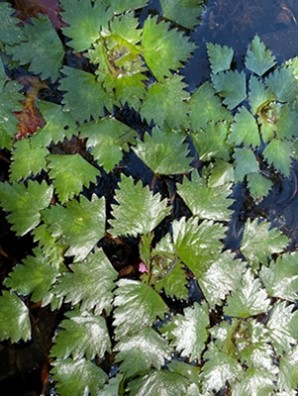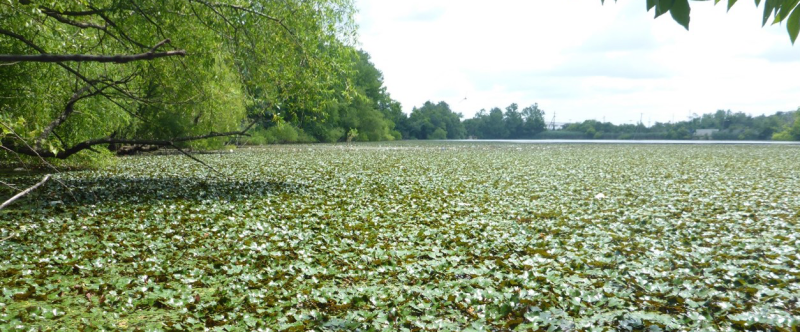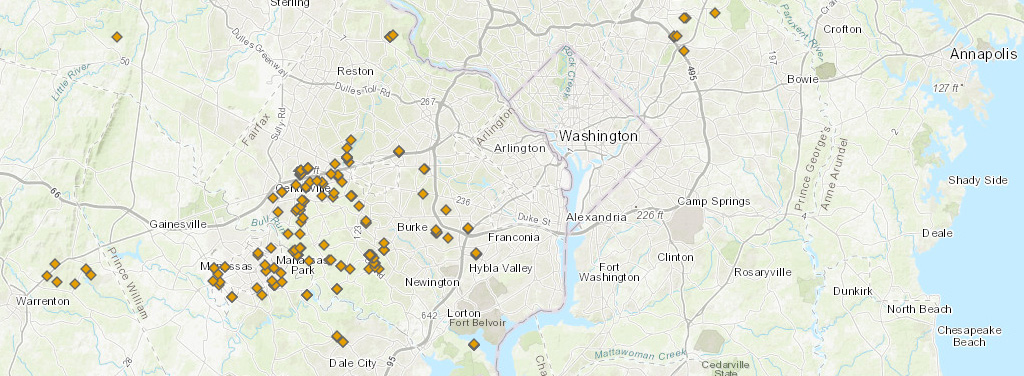 The aquatic invasive species known as Trapa bispinosa (two-horned water chestnut or two-horned trapa) has spread to more than 60 known locations in Fairfax County since 2000. The plant is found in rivers, tidal bays, and ponds throughout Fairfax County and is distinguishable by its triangular-toothed leaves.
The aquatic invasive species known as Trapa bispinosa (two-horned water chestnut or two-horned trapa) has spread to more than 60 known locations in Fairfax County since 2000. The plant is found in rivers, tidal bays, and ponds throughout Fairfax County and is distinguishable by its triangular-toothed leaves.
The County is asking for help detecting, reporting, and eradicating the invasive plant as spring is the peak season in which seedlings sprout and rapidly spread within bodies of water.
Trapa bispinosa typically emerges from seeds between April and May, and once summer comes, infestations spread across the water body rapidly and become more challenging to eradicate. It will flower, fruit, and the leaves become dense and visible on the water's surface from June to September.
In December, all the leaves die back with a hard frost, leaving just the viable seed in the bottom sediment. The previous year's black, two-spined seed hulls (1-inch-wide) can be found adrift along the shoreline throughout the year.
Infested waterways typically suffer from degraded water quality and detrimental impacts on surrounding habitats.

Maintenance and Stormwater Management Division Ecologist Erin Abrahams, who manages the contract to treat for invasive species, believes the joint effort to detect, report and eradicate the plant has proven beneficial in treating the early stages of infestations.
Abrahams said. "With the community's help, we can prevent, slow, and hopefully eradicate Tapa bispinosa from local waterways."
Thanks to the efforts of Fairfax County staff, regional and local partners, and residents, the plant is being monitored and controlled. Taking advantage of the management programs and reporting the plant to the USGS is a critical first step.
Community members can learn about the spread by visiting the United States Geological Survey nonindigenous aquatic species website to view locations Trapa bispinosa currently occurs. Monitoring and managing this invasive species in the next few years will have many long-term economic, recreational, and environmental benefits if we can prevent it from spreading into other water features or into navigable waters where it will obstruct boating activity and shade out native bay grasses.
Reported cases of Trapa bispinosa are spreading throughout the region and can be found west of Prince William County and north into Maryland. Click the image to visit the, visit the Nonindigenous Aquatic Species (usgs.gov) Interactive Map.


